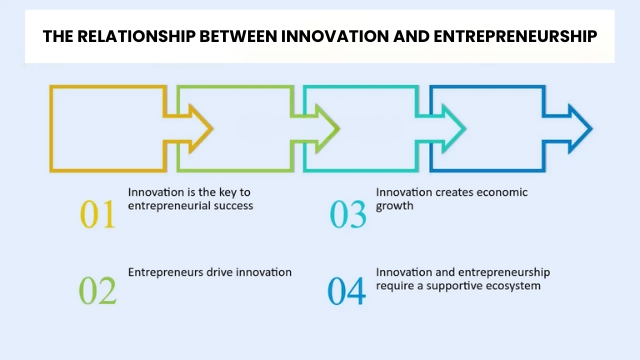What Is Innovation?
Innovation, in its broadest sense, refers to the process of creating something new or significantly improving existing products, processes, technologies, or business models. This can encompass enhancements in product features, technological advancements, streamlined supply chains, improved distribution methods, or more effective marketing strategies. Innovation can open up entirely new markets or provide ways to penetrate and dominate existing ones.
Historically, the concept of innovation has always been about evolving with time. For instance, consider how portrait paintings of ancestors, once treasured for their artistic representation and as a means to preserve family history, have given way to photography. Initially, the invention of film cameras allowed families to capture memories in photos, which could be stored in albums. This trend evolved further with the advent of digital photography, making it easier to capture and store memories on mobile devices. This shift from portrait paintings to mobile photography exemplifies how innovation simplifies and enhances processes over time.
A notable example in the camera industry is Kodak, which once dominated the market with its film roll photography. However, when digital photography emerged as a disruptive innovation, Kodak failed to adapt and was eventually pushed out of the market. This underscores the importance of embracing innovation to stay relevant in a competitive landscape.
In the business context, innovation is defined by the Business Dictionary as “the process of translating an idea or invention into a good or service that creates value or for which customers will pay. To be considered an innovation, an idea must be replicable at an economical cost and must satisfy a specific need.”
But how does innovation tie into entrepreneurship?
The Relationship Between Innovation and Entrepreneurship

Innovation and entrepreneurship are intrinsically linked, much like two sides of the same coin. Entrepreneurs use innovation as a tool to create new businesses or to improve and expand existing ones. Startups often emerge from innovative ideas, tapping into new business opportunities. Meanwhile, established companies innovate to outpace competitors and sustain their market position.
There are numerous global examples of companies where innovation is at the core of their business strategies. Apple, for instance, is frequently cited as one of the most innovative companies, having introduced game-changing products like the iPad, iPhone, and iTunes. According to Tim Cook, CEO of Apple, “Innovation is deeply embedded in Apple’s culture. We approach problems with boldness and ambition, and we believe there are no limits. Innovation is in the DNA of the company.”
Other companies known for their innovation include Google, Tesla Motors, Microsoft, Unilever, Amazon, and BMW. These companies have distinguished themselves in their respective industries by consistently innovating, which has had a profound impact on people’s lives.
Innovation and Indian Entrepreneurs
In India, there has been a growing trend of companies innovating products or services to address societal needs. According to the India Brand Equity Foundation (IBEF), some of the significant innovations from India include Byju’s – a learning app, Zomato – an online food ordering platform, HackerEarth – a recruitment platform, Smartivity – products for kids’ engagement, and Zuper – B2B software.
Indian engineers and scientists are increasingly coming up with commercially viable ideas. The ‘Make in India’ initiative has also played a pivotal role in fostering entrepreneurship by simplifying business setup processes, supporting intellectual property filings, and aiding funding efforts.
Today, India ranks third globally in terms of entrepreneurship, with significant improvements in the establishment of new businesses since 2014. The compound annual growth rate of new businesses between 2014-2018 was 12.2%, a marked increase from 3.8% during 2006-2014. While an innovative culture is slowly taking root among Indian enterprises, the most groundbreaking ideas are yet to emerge from Indian entrepreneurs.
But why is innovation so crucial for entrepreneurs? How does it impact business?
1. Innovation Helps Meet Customer Expectations
The adage “the customer is king” has long been a guiding principle for businesses. Traditionally, this meant providing good service and keeping customers happy. Over time, businesses began focusing on understanding and meeting customer needs to stay competitive. Today, the goal has evolved to creating products or services that customers may not yet realize they need.
Customer-centricity has become central to business strategies, with innovations designed to address specific customer pain points. Companies are increasingly engaging with customers through social media, integrating their feedback into the product development process to ensure that offerings are tailored to customer preferences.
Innovation is now at the heart of customer-oriented businesses, whether at the product level, process level, or within the business model itself.
Product-Level Innovation:
Consider the example of SmartCane, a product designed to assist visually impaired individuals. Traditionally, visually impaired people used a white cane to detect obstacles up to knee height. However, objects above knee height often went undetected, limiting their mobility. To address this challenge, a research group from IIT Delhi developed SmartCane, an electronic travel aid that detects obstacles above knee height using sonic waves and communicates the presence of these obstacles through vibratory patterns.
This innovative product not only enhances the mobility of visually impaired individuals but also represents a significant leap in product innovation aimed at solving a specific problem.
Process-Level Innovation:
Another example of innovation can be seen in the Akshaya Patra Foundation, an NGO that provides mid-day meals to school children. Akshaya Patra’s mission is to combat hunger and malnutrition among school children by providing nutritious meals. The organization serves approximately 1.8 million children across 19,039 schools each day, achieving this on a large scale through process innovation.
Akshaya Patra operates centralized kitchens equipped with fully automated machinery, such as roti-making machines capable of producing over 40,000 rotis per hour. The use of technology in the kitchen ensures that the food is prepared quickly, efficiently, and hygienically. The foundation also employs route simulation and interactive voice response systems (IVRS) to minimize logistics costs and ensure timely delivery of meals.
Moreover, Akshaya Patra has implemented biogas systems in its kitchens to convert organic waste into energy, reducing its reliance on LPG and further cutting costs. This innovative approach to process management has enabled Akshaya Patra to provide meals at a low cost while maintaining high standards of quality and hygiene.
Business Model Innovation:
Ola Cabs is an example of a company that has innovated its business model to better serve its customers. Initially, Ola operated as a traditional taxi rental service, purchasing cars and managing bookings through a call center. However, recognizing the potential of the digital age, Ola transitioned to a mobile app-based model, connecting customers directly with drivers through the Ola app.
The app allows users to book a cab based on their preferences, choose from different categories of cabs and price ranges, and track the driver’s location in real-time. Payment options are flexible, including cash, Ola Money, and UPI gateways. Ola’s innovative business model has streamlined the process of hiring a cab and reaching a destination, making it more convenient for both customers and drivers. This shift not only simplified the customer experience but also became a major revenue generator for the company.
2. Innovation Offers a Competitive Edge

One of the biggest challenges for any entrepreneur or enterprise is gaining a competitive advantage over other players in the market. Competitive advantage can be achieved by offering customers more value than competitors, either through lower prices or enhanced product features at a premium.
Innovation is a critical business strategy that can improve productivity, reduce costs, and sustain competitive advantage. By innovating, companies can penetrate markets more effectively, expand their customer base, and create unique offerings that set them apart from competitors. This can result in a first-mover advantage, allowing a company to establish a strong presence in a new market.
Building a Niche with Innovation:
Milk Mantra, an Odisha-based dairy startup, illustrates how innovation can create opportunities and build a niche. Founder Srikumar Mishra identified a gap in the dairy sector in Eastern India, where demand for milk exceeded supply. Milk Mantra’s business model focuses on ethical milk sourcing from farmers, eliminating middlemen and ensuring fair payment based on milk quality.
In addition to fair trade practices, Milk Mantra offers farmers services such as health check-ups for cows and affordable cow feed, which helps increase milk production and builds trust with farmers. The company also invests in innovative packaging that extends the shelf life of milk products. Today, Milk Mantra has a robust network of over 60,000 farmers and two large processing units.
This innovative approach has given Milk Mantra a competitive edge, allowing the company to offer high-quality dairy products at competitive prices while maintaining a consistent supply chain.
3. Innovation Drives Growth in Revenue and Market Share
Market share refers to the percentage of total sales in an industry that a particular company controls. The higher the market share, the greater the profits for the company. To stay ahead and capture more market share, businesses must continually innovate both their products and their marketing strategies.
A unique product offering can set a company apart from its competitors and help it gain a larger share of the market. For example, Patanjali, an Indian FMCG company, entered a highly competitive market with its range of herbal and organic products. By positioning itself as an Indian brand with a focus on natural ingredients and affordable pricing, Patanjali was able to disrupt the market and establish a strong foothold.
Innovation not only helps a company capture market share but also plays a crucial role in sustaining it. Staying relevant to consumers and continually adapting to changing market conditions is essential for long-term success. Investing in innovation and research and development ensures that a company remains competitive and retains its market position.
4. Innovation Fosters a Culture of Creativity, Problem-Solving, and Continuous Learning
Companies that prioritize innovation encourage a culture of creativity and problem-solving among their employees. A creative work environment prepares a company to respond quickly to external challenges and stay ahead of the curve.
Innovation is essential for keeping up with changing trends and adapting to new technologies. A company’s ability to innovate quickly and effectively can lead to long-term success and open doors to new markets.
However, it’s important to recognize that innovation is not without risk. Many Indian startups, for instance, have been criticized for lacking originality and relying on replicating existing technologies or business models. According to a survey by Oxford Economics under the IBM Institute for Business Value, 90% of Indian startups fail within the first five years, with 77% of venture capitalists citing a lack of innovation as the primary reason for failure.
Despite the risks, fostering an innovative culture is crucial for long-term success. Naveen Tiwari, founder of InMobi, a mobile advertising service provider, aptly said, “Innovation happens when you fail, fail, fail, and then you succeed. InMobi has created multiple innovations within the company in the past few years. They all have become very large divisions within the company, and we feel that’s the only way in which we can succeed.”
Innovation, even when accompanied by the risk of failure, is essential for the sustainability of a business. Companies that fail to innovate risk being left behind in an increasingly competitive market.
5. Innovation Helps Build Strong Brand Equity

Brand equity refers to the value of a brand in the eyes of consumers. It encompasses customer perceptions, brand loyalty, and the overall worth of the brand. Building strong brand equity is crucial for outperforming competitors and achieving long-term success.
Customers are more likely to be loyal to brands that are perceived as innovative. According to 2018 BrandZ data, a brand valuation rankings platform, “Brands which people consider to be the most innovative grew their brand value 25% more than their rivals.”
Innovative brands must communicate their value proposition effectively through branding strategies, advertising campaigns, and promotional activities. This helps in building strong brand equity and ensuring that the brand remains top of mind for consumers.
Conclusion
Innovation is undeniably crucial for entrepreneurs. It helps meet customer expectations, offers a competitive edge, drives growth in revenue and market share, fosters a culture of creativity and continuous learning, and builds strong brand equity. In today’s fast-paced and ever-changing business environment, innovation is not just an option—it’s a necessity for survival and success.
Author Profile

- Nitin Jain - C.E.O - India PR Distribution
- Nitin Jain is the founder and C.E.O of India PR Distribution - India's top Press Release Distribution and PR Agency. Nitin has more than 20 years of experience in PR, Corporate Communications, Digital Marketing, Branding Strategy and Lead generation.
Latest entries
 Press releaseNovember 20, 2025Meet Nitin Jain: CEO of India PR Distribution
Press releaseNovember 20, 2025Meet Nitin Jain: CEO of India PR Distribution Search OptimizationSeptember 16, 2025What Is Digital PR and Why It Matters for SEO Success
Search OptimizationSeptember 16, 2025What Is Digital PR and Why It Matters for SEO Success Press releaseAugust 14, 2025Press Release Distribution: How to Share Your News Effectively
Press releaseAugust 14, 2025Press Release Distribution: How to Share Your News Effectively Search OptimizationJuly 29, 2025Digital PR for SEO – The Ultimate Guide to Boosting Your Rankings
Search OptimizationJuly 29, 2025Digital PR for SEO – The Ultimate Guide to Boosting Your Rankings

